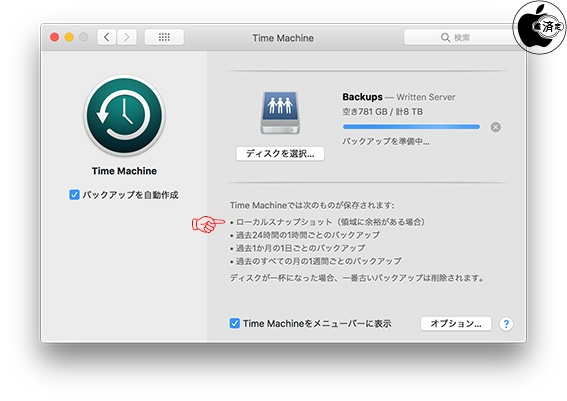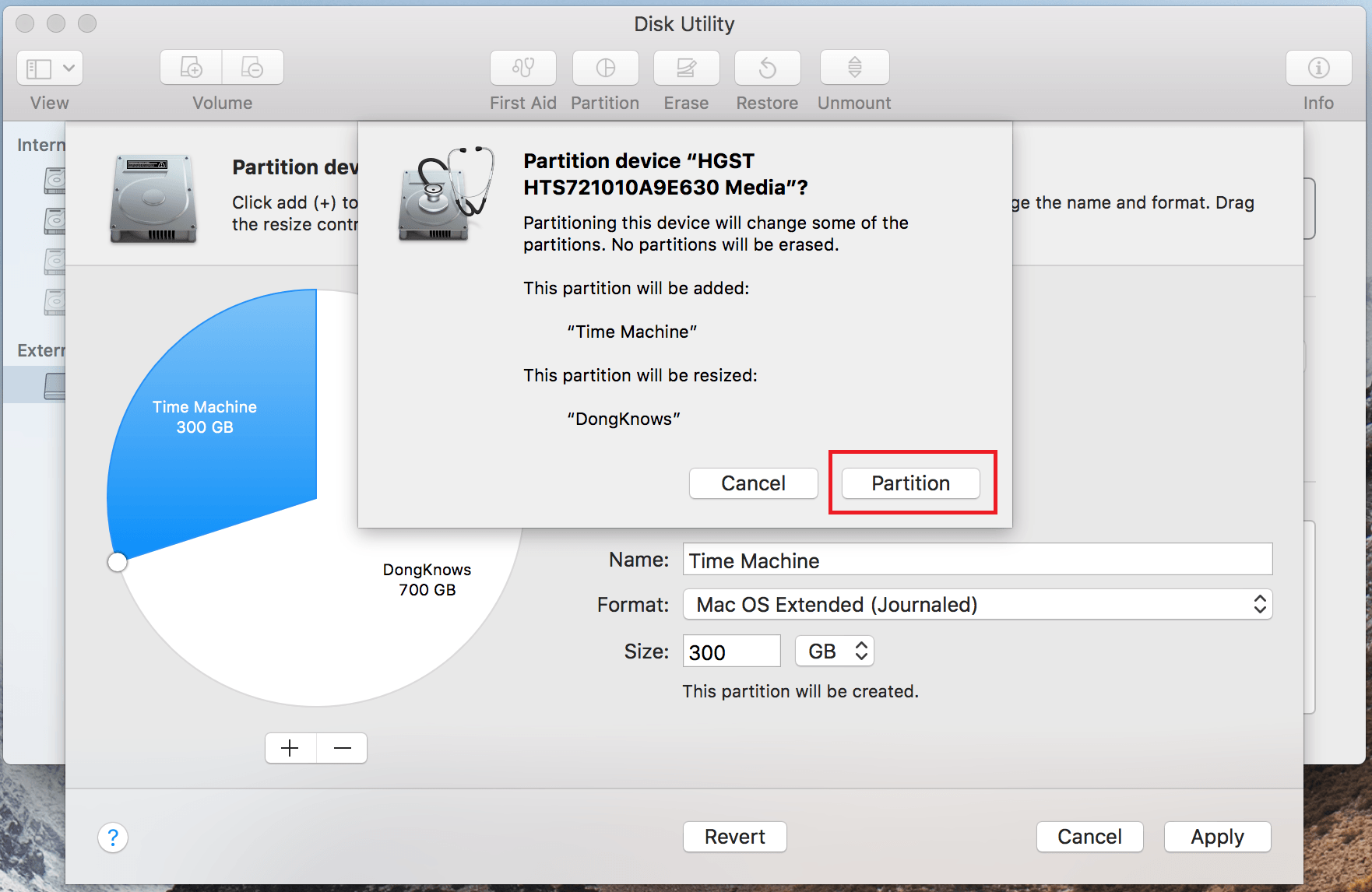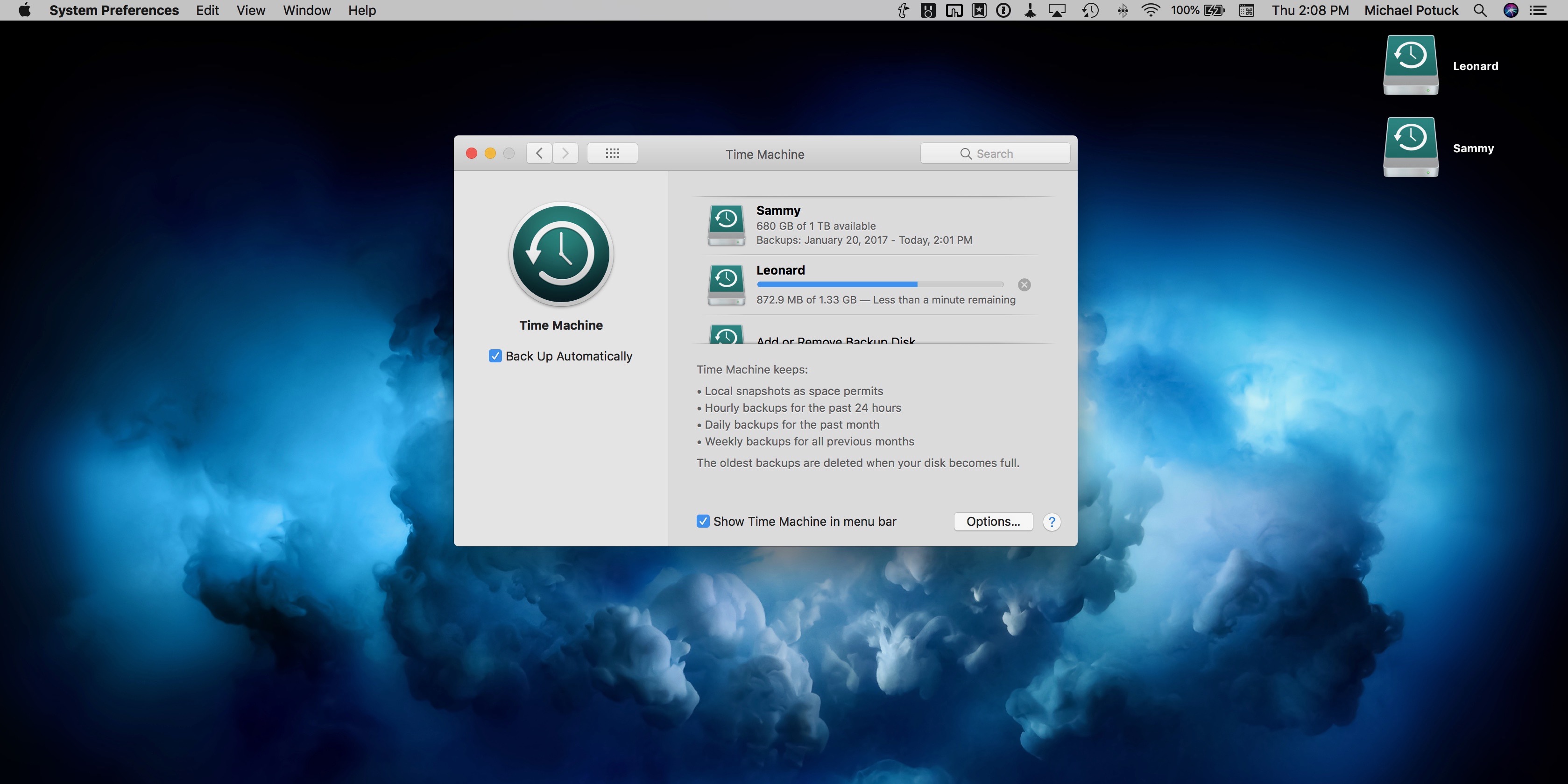

- #Timemachine settings for mac sierra manual#
- #Timemachine settings for mac sierra software#
- #Timemachine settings for mac sierra download#
- #Timemachine settings for mac sierra free#
If you have a more precise time of that unmount failure, try viewing all log entries for 10 seconds before and 10 seconds after that time. Perhaps your best strategy is to locate the time of the end of a backup in which unmounting failed, then use that as the Start time for a short view of all log entries, putting the End time say 30 seconds later. I’m not sure that the unmounting of a NAS will show in the Time Machine log entries anyway, as the error is unlikely to be in the backup itself. Once you’ve done that, the custom additions will all appear in the popups. In Consolation 3, you haven’t yet imported the Property List supplied with the app, appropriate to your version of macOS, as described above. You may find it easier to use the stepper control instead. In T2M2 (and Consolation), if you directly edit the number of hours (etc.), you must press Return or Tab for the change to be recognised – it’s one of the ‘features’ of the numeric box.
#Timemachine settings for mac sierra free#
Either log on as an admin user to run it, or use my free app Run T2M2 to run it with elevated privileges. ⚠️ If you normally use your Mac as an ‘ordinary’ rather than an admin user, Apple decided a couple of years ago that you couldn’t have access to the logs, which T2M2 relies on. If you use Time Machine, you’ll want T2M2 if you’re running High Sierra or Mojave, version 1.4 now brings you significant improvements. In its default configuration, all you need do is set the time period to 2 hours, for example, and click on its Get log button to view all the Time Machine entries – it is as easy as that.
#Timemachine settings for mac sierra download#
If that’s the case, don’t waste time trying to use Console or the log command: download my Consolation 3 log browser. Sometimes you need the additional information provided in the original log messages to understand what has gone wrong. In most cases where there are problems in making backups, T2M2 and its Help book should provide sufficient information for you to diagnose the cause and fix it. When you click on this button in T2M2, it triggers a backup which is as close as possible to a normal automatic backup, and includes local snapshots where those are available. macOS has several different ways of making backups through Time Machine, some of which are better than others.
#Timemachine settings for mac sierra manual#
One feature which I should mention is its ability to make a manual backup immediately, using the Back up now button.


And, for your added security, it is now notarized.
#Timemachine settings for mac sierra software#
It also includes a new menu item which makes it easy for you to check this blog for software updates to it, and to my other free tools. Its Help book, which is detailed and thorough, has been updated too. In its reports, it now tells you how many local snapshots have been created, and how many removed:Ĭreated 8 new snapshots, and deleted 7 old snapshots It analyses backups made from HFS+ volumes in Sierra, High Sierra, and Mojave, and from APFS volumes in High Sierra and Mojave.

I’m delighted to announce that all these issues and more have now been addressed in a new version, T2M2 1.4, available from here: t2m214 It has run, and version 1.3 still does, even in Mojave, but one figure is invariably wrong, it doesn’t look at local snapshots, and doesn’t do Dark Mode either. Click on its Check Time Machine button, and it gives a traffic light indicator, hopefully green, as to how your backups are running, and provides some useful detail about the whole backup system.īecause I was unable to run backups in High Sierra (it’s a long story involving a Fusion Drive, APFS, and inability to dual-boot High Sierra), T2M2 hasn’t been updated for changes which were introduced in macOS 10.13. My solution is a free tool, The Time Machine Mechanic, or T2M2, which I built to analyse Time Machine entries automatically in Sierra’s logs. But from Sierra on, that has become increasingly complex, and most users would rather undergo root canal treatment than try to make any sense of what they now see in Console. Before Sierra brought the new unified log, it was easy to check for problems using Console. But it’s easy to forget, and sometimes can be misleading. You can keep Time Machine’s menu in your menubar, and every day check that the last backup was made less than an hour ago. The snag is that, when backups stop being made, you may be none the wiser: Time Machine isn’t very good at warning you that something has gone wrong. So long as you keep ample free space on the volume which holds your backups, it should only rarely run into trouble. For much of the time, Time Machine backups just work.


 0 kommentar(er)
0 kommentar(er)
